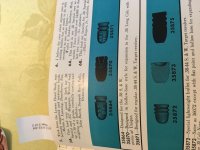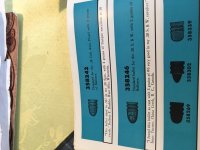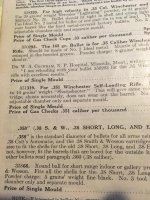I am afraid that you are looking for information to support an answer you already have. Usually, it is the other way round?? I also guess you did not notice that I had measured three 38 Perfected revolvers and they all came up with the same nominal groove diameter as their predecessors. I have one of the latest 38 Perfected revolvers made and it was made in the last year of production They all used exactly the same barrel assembly as the original 38 DAs and the frame was adapted from a Model 1903, 32 HE, I frame. Bore dimensions of the 38 top-breaks did not change period!! The mouth of the cylinders will measure about .361" and so will the grooves if care is taken to make sure you are not measuring the lands.
There is data that shows that 38 Colt, not S&W 38 Special underwent a size reduction from .377 to .357 around 1900. The 38 Special was designed from the start to use .357" bullets, never .361" of the 38 S&W or 377" of the 38 Colt. There is evidence that the size reduction of the 38 Colt bullet was a result of the Army and Navy purchasing S&W 38 Special revolvers and both Colt and S&W hand ejectors needed to be able to use the same ammunition. Around the turn of the Twentieth Century, these calibers were also called 38 Military and 38 S&W Special & US Service cartridge for a time In the Model 3 & N frame revolvers, the first was 44 Russian, which evolved to the 44 Special and ultimately the 44 Magnum. Today's 44 Magnum revolvers will shoot all three cartridges, which are still to this day .429" diameter bullets.
No reloading die sets made today offer a smaller bullet cartridge for smokeless powder era versus a larger bullet cartridge for BP era. No reloading data offers a smaller post-BP bullet for reloading those calibers of the late 1800s. As for 45 Colt, it is true that Colt changed the size of their bullets, but it happened in 1891, not 1900. Frankford Arsenal loads in January, 1891 used a .453" bullet and maybe by coincidence, that same date is when the arsenal went from copper to brass casings. I see that there appears to be no way to pull you off the path that you believe that all smokeless caliber bullets were reduced in size from their BP predecessors to effect a lower pressure load, no matter what information and data we provide, so I also give up.



